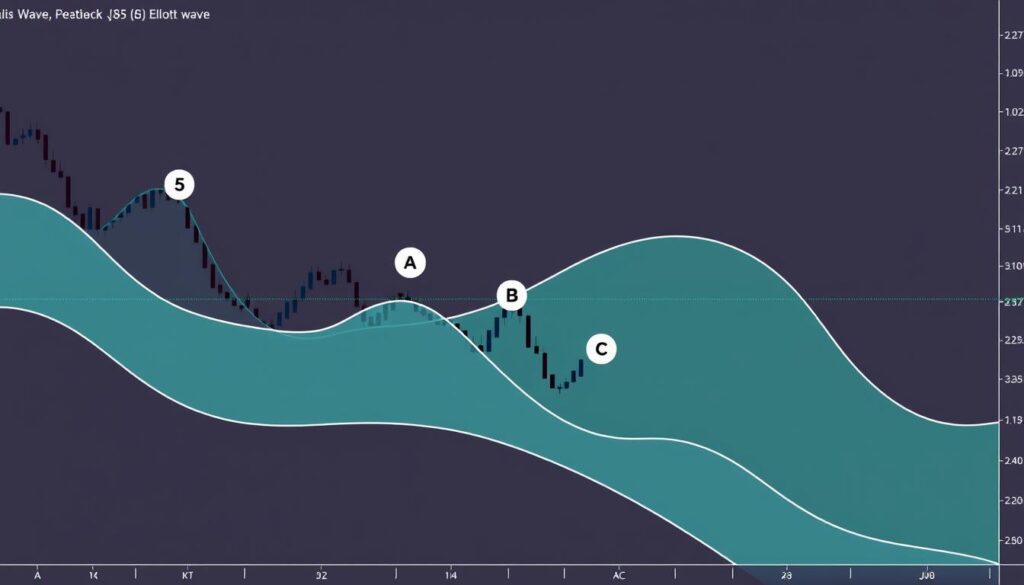Now Reading: Cryptocurrency ETF exchange traded fund Explained
- 01
Cryptocurrency ETF exchange traded fund Explained
Cryptocurrency ETF exchange traded fund Explained

The world of digital assets is opening up to a wider audience. A new type of investment vehicle now connects traditional finance with the crypto market. This guide explores this innovative option for investors.
These products, known as exchange-traded funds, offer a simpler path to market participation. They remove the technical hurdles of direct ownership, like managing digital wallets. This makes gaining exposure to the cryptocurrency space much more straightforward.
For many people, this is a significant evolution. It allows participation through familiar brokerage accounts. You can buy and sell shares just like a stock. This guide will break down the mechanics and benefits of these popular funds.
Key Takeaways
- These funds bridge the gap between traditional stock markets and the digital asset ecosystem.
- They provide a way to gain exposure to crypto prices without the need for technical knowledge.
- Investments are made through standard brokerage accounts, simplifying the process.
- This approach eliminates concerns about private key security and wallet management.
- The products operate within a regulated financial framework, offering a layer of security.
- They have gained significant popularity among both individual and institutional investors.
- Understanding how they work is crucial for evaluating if they fit your portfolio strategy.
Introduction to Cryptocurrency ETFs
A new bridge has been built connecting traditional stock markets with the dynamic world of blockchain-based assets. These innovative products offer a regulated pathway for market participation.
What Are Crypto ETFs?
These specialized financial instruments track the performance of digital currencies. They function within established market frameworks, providing exposure to crypto prices.
Investors can access these products through regular brokerage accounts. This eliminates the technical challenges of direct digital asset ownership.
The structure mirrors traditional investment vehicles but focuses on blockchain technologies. Shares trade on major exchanges during normal market hours.
This approach offers enhanced security and regulatory oversight. It addresses concerns about wallet management and private key storage.
Various options track different digital assets like Bitcoin and Ethereum. This allows for targeted or diversified exposure based on investment goals.
Deep Dive: Cryptocurrency ETF Exchange Traded Fund Overview
Different categories of crypto-focused investment funds offer varying levels of direct market access. Understanding these structural differences helps investors choose the right approach for their portfolio strategy.

These products generally fall into three main types. Spot-based options hold the actual digital currency as their core holding. Futures-based versions use derivative contracts instead of direct ownership.
Some funds focus on companies working with blockchain technology. This provides indirect exposure to the growing digital asset ecosystem.
The spot variety represents the most straightforward approach. It tracks the current market value of the chosen digital currency throughout the trading day.
Bitcoin-focused products have received significant attention from market participants. They allow price participation without the technical challenges of wallet management.
Each fund has specific investment objectives targeting single or multiple digital assets. The underlying structure determines how closely returns match the actual currency performance.
Authorized participants help maintain price alignment between shares and asset values. This mechanism ensures the investment vehicle accurately reflects market movements.
How Crypto ETFs Work
Behind the scenes of these popular investment products lies a carefully engineered system. The operational framework ensures smooth market participation while maintaining price accuracy.
Mechanisms of ETF Trading
These digital asset vehicles function through a systematic approach. The fund acquires and holds either actual digital currencies or derivative contracts.
Shares then become available on major stock exchanges. Investors can trade them just like traditional equity securities through standard brokerage accounts.

Spot Price vs. Underlying Asset Comparison
A critical distinction exists between the current market price and the ETF’s trading value. While they typically move together, temporary differences can occur.
During periods of high volatility, the share price may trade at a premium or discount. Authorized participants help maintain alignment between these values.
This mechanism ensures the investment accurately reflects the underlying asset performance. Market makers create or redeem shares based on demand.
Benefits of Investing in Crypto ETFs
The primary appeal of these investment vehicles lies in their combination of accessibility, security, and convenience. They transform a complex digital ecosystem into a manageable portfolio addition.

This approach opens the market to a broader range of participants. It simplifies the process of gaining exposure to digital assets.
Ease of Access and Diversification
Investing through these funds is remarkably straightforward. You can use your existing brokerage account to buy shares.
This eliminates the need to learn complex wallet technology. It provides immediate market participation.
A major advantage is instant portfolio diversification. Many funds hold a basket of different digital assets.
This strategy helps spread risk. It is a smarter approach than betting on a single coin.
Regulatory Security and Streamlined Management
These products operate within established financial frameworks. They offer a layer of regulatory oversight and protection.
Professional teams handle the technical aspects of custody and security. This removes significant management burdens from the investor.
You benefit from institutional-grade safeguards. Concerns about private keys or exchange hacks are greatly reduced.
Consolidated Investment Approach
All your holdings are consolidated within one familiar account. You can view your crypto exposure alongside stocks and bonds.
This simplifies tracking, reporting, and overall portfolio management. It creates a unified financial picture.
| Feature | Direct Crypto Ownership | Crypto Fund Investment |
|---|---|---|
| Account Type | Separate Digital Wallet & Exchange Accounts | Standard Brokerage Account |
| Security Management | Investor’s Responsibility | Handled by Fund Custodian |
| Diversification Effort | Manual Purchases Across Assets | Built into a Single Share |
| Regulatory Environment | Varies by Platform | Established Securities Framework |
This consolidated method offers a clear and efficient path for investors. It integrates digital assets seamlessly into a traditional strategy.
Risks and Considerations in Crypto ETF Investing
While these regulated products offer a simplified path to digital asset exposure, they carry specific risks that require careful consideration. Understanding these potential challenges helps investors make informed decisions.

The primary risk involves the inherent volatility of digital assets. Prices can swing dramatically within short periods, affecting fund values directly.
Market Volatility and Tracking Errors
Tracking errors represent another significant concern. The fund’s performance may not perfectly match the underlying asset due to management fees and operational costs.
This discrepancy can lead to unexpected investment returns. Futures-based products face additional costs from contract rollovers.
Regulatory and Liquidity Challenges
Regulatory uncertainty remains a critical factor. Government policies and legal frameworks continue to evolve across different jurisdictions.
Liquidity can become challenging during extreme market conditions. Wider bid-ask spreads may develop, making trades more difficult.
| Risk Category | Direct Crypto Ownership | Crypto Fund Investment |
|---|---|---|
| Price Volatility | Direct exposure to market swings | Filtered through fund structure |
| Regulatory Impact | Varies by platform and jurisdiction | Subject to securities regulations |
| Liquidity Access | 24/7 market availability | Limited to exchange hours |
| Fee Structure | Primarily transaction fees | Management expense ratios apply |
Expense ratios for these products tend to be higher than traditional funds. Specialized custody and security measures contribute to increased costs.
Investors should also note they don’t own the actual digital assets. This limits participation in certain ecosystem features like staking rewards.
Strategies for Effective Portfolio Diversification
Building a resilient portfolio requires careful allocation between established markets and emerging opportunities. Smart diversification helps manage risk while capturing growth potential across different asset classes.
This approach involves blending traditional holdings with newer digital options. The goal is creating a balanced mix that withstands market fluctuations.
Balancing Traditional Investments and Crypto Exposure
Financial experts typically suggest keeping digital asset exposure modest. Many recommend allocating only 1-5% of your total portfolio value to these volatile assets.
This limited allocation recognizes the high-growth potential while acknowledging the risks. Younger investors with longer time horizons might consider slightly higher percentages.
Understanding correlation patterns is crucial for effective balancing. Digital assets sometimes move independently from stocks and bonds, offering true diversification benefits.
Utilizing ETF Screener Tools
Modern investment platforms offer powerful screening tools for fund selection. These tools help compare different options based on key criteria.
You can filter by expense ratios, assets under management, and tracking methodology. This helps identify products that match your specific investment goals.
Regular portfolio rebalancing maintains your intended risk levels. Establish clear triggers for adjusting allocations as market conditions change.
Navigating the Evolving Crypto Market Landscape
The regulatory landscape for digital assets underwent a monumental shift in early 2024. Landmark decisions by the U.S. Securities and Exchange Commission have reshaped how investors access this dynamic space.
These approvals have endorsed the legitimacy of major digital currencies. They opened avenues for international markets to explore similar financial products.
Impact of SEC Approvals on ETF Offerings
January 2024 saw the SEC approve spot bitcoin products for trading. This decision allowed major firms like BlackRock and Fidelity to launch new vehicles.
The move opened floodgates for institutional and retail capital. Investors gained exposure through familiar brokerage accounts, driving significant inflows.
This approval intensified competition among asset managers. It led to fee compression, directly benefiting investors.
In July 2024, the SEC extended approval to Ethereum spot products. This recognized the second-largest digital asset as a worthy component for regulated portfolios.
Current Trends in Global Crypto ETF Markets
Current trends show massive institutional adoption through these new vehicles. Billions of dollars flowed in quickly, demonstrating pent-up demand.
Trading volumes have exceeded all expectations. Some spot bitcoin products rank among the most successful launches in history.
The market continues to evolve beyond bitcoin and Ethereum. There is anticipation for future products tracking other digital assets.
The broader impact of these approvals is significant. It has encouraged other countries to re-examine their own regulatory frameworks.
| Aspect | Pre-2024 Environment | Current Landscape |
|---|---|---|
| Regulatory Stance | Skepticism and limited options | Approved, regulated products available |
| Investor Access | Complex, through specialized exchanges | Simplified, via standard brokerage accounts |
| Product Variety | Primarily futures-based vehicles | Spot products dominate, with more diversity expected |
| Market Maturity | Niche, technology-focused | Mainstream portfolio component |
This evolution represents a maturation of the entire digital asset ecosystem. It moves crypto from a niche interest to a mainstream investment.
Conclusion
Investors now have unprecedented access to blockchain-based assets through familiar financial instruments that simplify portfolio diversification. These regulated products bridge traditional markets with innovative digital currencies.
The key advantages include professional management and regulatory oversight. Investors gain exposure without technical complexities of direct ownership. This approach integrates seamlessly with existing brokerage accounts.
However, understanding the associated risks remains crucial. Market volatility and regulatory changes require careful monitoring. A balanced approach ensures appropriate position sizing.
Thorough research and ongoing education empower investors to make informed decisions. These products represent a valuable tool for modern portfolio construction when used strategically.
FAQ
What exactly is a crypto ETF?
A crypto ETF is an investment fund that trades on traditional stock exchanges. It allows investors to gain exposure to digital currencies like Bitcoin without directly owning them. These products track the price of the underlying asset, offering a more familiar way to invest in the blockchain technology space.
How do these funds work?
These funds operate by holding assets related to cryptocurrencies, such as futures contracts or the physical currency itself. The fund’s performance aims to mirror the market price. Investors can buy and sell shares through their regular brokerage account, just like stocks.
What are the main benefits of using a crypto ETF?
The primary advantages include ease of access, diversification, and regulatory oversight. They provide a streamlined management approach, letting you add digital currencies to your portfolio without the technical risks associated with direct ownership, like managing private keys.
What risks should I be aware of?
Key risks involve market volatility, potential tracking errors where the fund’s performance doesn’t perfectly match the asset’s price, and regulatory changes. Liquidity challenges can also arise, impacting your ability to trade shares quickly.
How can I use these for portfolio diversification?
You can use them to balance traditional investments with crypto exposure. Utilizing an ETF screener tool helps you compare different funds based on their holdings, fees, and performance details to find the right fit for your investment strategy.
Are there different types of crypto ETFs available?
Yes, there are several types. Some track the spot price of a currency like Bitcoin, while others are based on futures contracts. The offerings continue to evolve, especially with recent SEC approvals expanding the options for investors in the United States.















